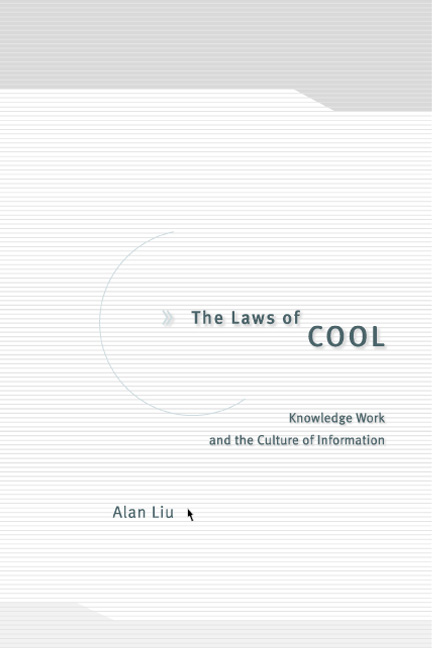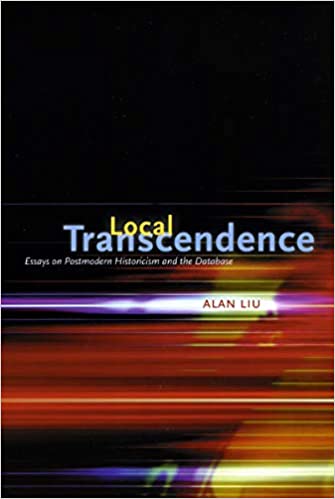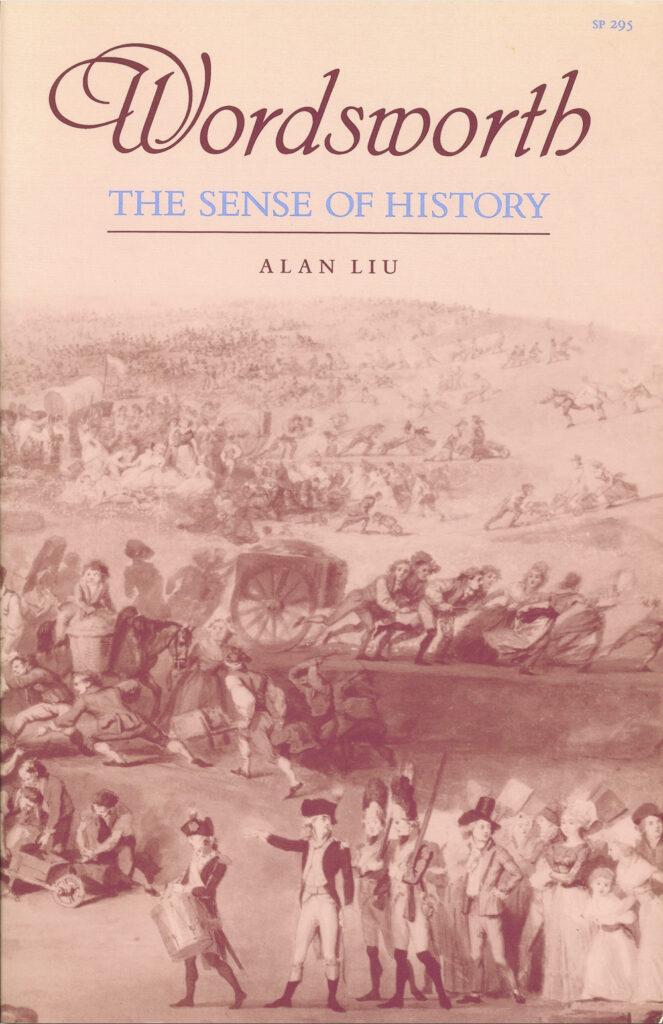The Laws of Cool:
Knowledge Work and the Culture of Information
- Author: Alan Liu

“Knowledge work” is now the reigning business paradigm and affects even the world of higher education. But what perspective can the knowledge of the humanities and arts contribute to a world of knowledge work whose primary mission is business? And what is the role of information technology as both the servant of the knowledge economy and the medium of a new technological cool?
In The Laws of Cool, Alan Liu reflects on these questions as he considers the emergence of new information technologies and their profound influence on the forms and practices of knowledge. Liu first explores the nature of postindustrial corporate culture, studies the rise of digital technologies, and charts their dramatic effect on business. He then shows how such technologies have given rise to a new high-tech culture of cool. At the core of this book are an assessment of this new cool and a measured consideration of its potential and limitations as a popular new humanism.
According to Liu, cool at once mimics and resists the postindustrial credo of innovation and creative destruction, which holds that the old must perpetually give way to the new. Information, he maintains, is no longer used by the cool just to revolutionize human knowledge – it is also used to resist it. What counts as cool today, however, is too frequently narrow, shallow, and self-centered. The challenge for the humanities, then, is to help redefine cool and to use technology in a way that mediates between knowledge work and a fuller lifework glimpsed in historical lives and works.
A study of enormous scope, ambition, and intellect, The Laws of Cool provides an indispensable account of knowledge work today and its future.
Excerpt:
At lilac evening I walked with every muscle aching among the lights of 27th and Welton in the Denver colored section, wishing I were a Negro, feeling that the best the white world had offered was not enough ecstasy for me, not enough life, joy, kicks, darkness, music, not enough night.
— Jack Kerouac, On the Road (1957),
quoted in Dick Hebdige,
Subculture: The Meaning of StyleSomeday, we’ll all agree on what’s cool on the Net. In the meantime, the Netscape cool team will continue to bring you a list of select sites that catch our eye, make us laugh, help us work, quench our thirst . . . you get the idea.
— Netscape Communications, Inc., “What’s Cool?” page (March 1996)“What’s cool?” the Netscape corporation asked on one of the best known pages of its Web site in 1996. The answer offered on the page (quoted as one of my epigraphs, above) quickly passes over the “we” who do not yet know what cool is (“someday, we’ll all agree on what’s cool on the Net”) to install a “cool team” charged with generating an empirical definition of cool – a list of sites. These are the sites, the team says (itself now appropriating the first-person plural), “that catch our eye, make us laugh, help us work, quench our thirst . . . you get the idea” (ellipsis in the original).
For just a moment, it is as if we were latter-day Chaucerian pilgrims questing (“searching,” they call it on the Internet) not so much for a holy site as for any quotidian site along the way whose sensual, even multimedia gusto can help us reintegrate our lives of work and leisure (“eye,” “laugh,” “work,” “thirst”). Or, again, it is as if the cool team were leading us on an exodus out of the pharaoh’s land of routines, procedures, standards, and protocols toward a land of milk and honey far beyond the reach even of company rafting trips, rock climbs, desert hikes, and other such retreats of corporate culture. It is as if . . . you get the idea.If Web cool is the tailfin on the machines that take us down the information superhighway, what do we see when we stare into all that chrome? What is information cool? (p. 177)
What is cool in the age of networked information? What is cool when even our youngest children know to say “cool” in the presence of high technology? when cool and its antithesis, suck (as in, “either you’re cool or you suck”), have become the two most widely diffused slang terms for approval and disapproval among American high-school and college students (with recognition rates above 90 percent)? when students and workers entering the corporations are as likely to dress their stereos, TVs, and other high-tech gear as themselves in cool, haute-couture black? and, above all, when everywhere we look (at TV shows or films with their own Web sites, for example), a new king cool, information cool, has been anointed to carry all the rest into the new millennium? The day is not yet, perhaps, when we will be cool for the circuitry tattooed under our skins or gold processor sockets inlaid in our heads, though the swarming of sleek cell phones and handheld computers may presage such info-fashion. But already our computer “desktop,” that workaday interface of information culture, sports a new look far more seriously cool than any of the screensavers of old. Our desktop, as it were, has grown tailfins. At a click, its window opens onto the World Wide Web, whose hyperbolic, even desperate, cool may be taken to be the insignia of information cool.If Web cool is the tailfin on the machines that take us down the information superhighway, what do we see when we stare into all that chrome? What is information cool?
Purchase
Citation Information
- Full Title: The Laws of Cool: Knowledge Work and the Culture of Information
- City of Publication: Chicago
- Publisher: University of Chicago Press
- Publication Date: 2003
- Publisher Website: Link


